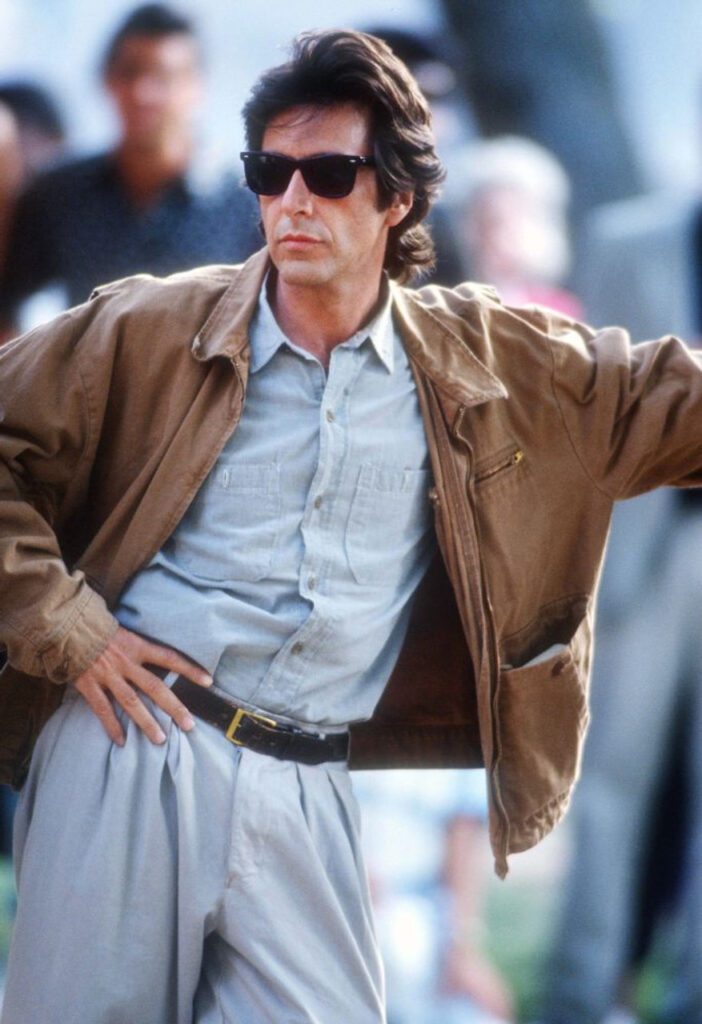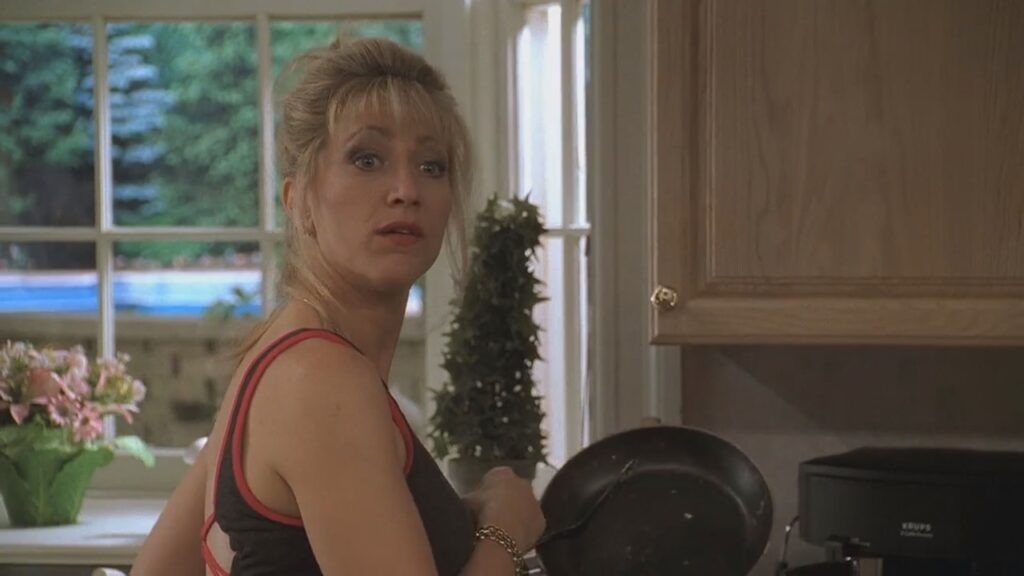“The Insider” (1999): Exposing the Truth – Film Review

“The Insider,” directed by Michael Mann and released in 1999, stands as a monumental film in the realm of investigative drama, a genre that thrives on unearthing hidden truths and challenging powerful entities. This film, based on the true story of Jeffrey Wigand’s whistleblowing on the tobacco industry, is a testament to Mann’s prowess as a filmmaker, blending meticulous narrative structure with striking visual aesthetics.
The Journey of Michael Mann’s Cinematic Brilliance
Michael Mann’s filmography from the early 1980s to the mid-2000s reflects a period of relentless creativity and success. “The Insider” is nestled within this era, a string of films that began with “Thief” (1981) and culminated with “Collateral” (2004). Each of these films showcases Mann’s ability to delve deeply into his characters’ psyches while maintaining a gripping narrative pace.
- “Thief” introduced audiences to Mann’s distinct style—dark, moody atmospheres coupled with intense character studies.
- “Manhunter” (1986) and “Heat” (1995) further established his reputation, with “Heat” being particularly noted for its intricate plot and complex character interactions.
- “The Insider” fits perfectly within this progression, demonstrating Mann’s evolution in handling true stories with a compelling mix of realism and drama.
Comparing Film and Reality: Jeffrey Wigand’s Story
The narrative of “The Insider” is rooted in the real-life events surrounding Jeffrey Wigand, a former executive at Brown & Williamson, one of the major tobacco companies. The film explores Wigand’s decision to blow the whistle on the industry’s knowledge of the health hazards associated with smoking and their efforts to enhance the addictive properties of cigarettes.
- In reality, Jeffrey Wigand faced enormous personal and professional risks in exposing the truth. His journey from a corporate scientist to a whistleblower highlights the profound moral and ethical dilemmas he encountered.
- “The Insider” captures these conflicts with precision, portraying Wigand’s transformation through a powerful performance by Russell Crowe. The film emphasizes the toll on his personal life, from threats to his safety to the strain on his family relationships.
The film meticulously follows Wigand’s interactions with Lowell Bergman (played by Al Pacino), a producer for the television news program “60 Minutes,” who plays a crucial role in bringing Wigand’s revelations to the public. The tension between the pursuit of truth and the corporate and legal pressures to suppress it forms the crux of the film’s dramatic tension.
Technical Mastery: Direction and Cinematography
Michael Mann’s directorial expertise is evident in every frame of “The Insider.” The film’s technical aspects—direction, cinematography, and sound design—work in concert to create a riveting viewing experience.
- Cinematography: Dante Spinotti, Mann’s frequent collaborator, crafted a visual style that emphasizes the claustrophobic and intense nature of the story. The use of close-ups and tight framing mirrors the pressure faced by the characters, while the muted color palette underscores the film’s somber themes.
- Direction: Mann’s direction is both precise and immersive. He draws compelling performances from his cast, ensuring that every interaction feels authentic and consequential. Mann’s attention to detail in recreating the environments—from corporate boardrooms to courtrooms—adds to the film’s credibility.
- Sound Design and Score: The sound design enhances the film’s atmosphere, with a subtle yet impactful score by Pieter Bourke and Lisa Gerrard that complements the narrative’s tension and emotional depth.
Implications for the Tobacco Industry
“The Insider” does more than tell a story; it exposes the systemic malpractices within the tobacco industry and the lengths to which corporations will go to protect their interests. The film illustrates the broader implications of Wigand’s revelations, both legally and socially.
- The real-life fallout from Wigand’s testimony was significant. It led to increased public awareness of the dangers of smoking and contributed to the landmark Tobacco Master Settlement Agreement in 1998, which imposed significant financial penalties on the industry and enforced stricter regulations.
- The film also raises critical questions about journalistic integrity and the pressures faced by media organizations when powerful interests are at stake. The portrayal of CBS and its internal conflicts over airing Wigand’s interview underscores the challenges of balancing truth-telling with corporate interests.
Performances that Elevate the Narrative
The cast of “The Insider” delivers performances that are both nuanced and powerful, bringing depth to the film’s already rich narrative.
- Russell Crowe as Jeffrey Wigand: Crowe’s portrayal of Wigand is nothing short of transformative. He captures the scientist’s initial reluctance, his growing resolve, and the personal costs of his decisions. Crowe’s ability to convey vulnerability and strength in equal measure anchors the film.
- Al Pacino as Lowell Bergman: Pacino’s performance as the dogged journalist is both charismatic and empathetic. Bergman’s unwavering commitment to the truth and his support for Wigand provide a counterbalance to the corporate and legal pressures depicted in the film.
- Supporting Cast: The supporting performances, including Christopher Plummer as Mike Wallace and Philip Baker Hall as Don Hewitt, add layers of complexity to the story. Each actor brings a distinct perspective, enhancing the film’s exploration of morality, ethics, and justice.
Narrative Structure and Pacing
“The Insider” employs a narrative structure that meticulously builds tension while exploring the intricate details of the whistleblowing process.
- The film’s pacing is deliberate, allowing viewers to fully grasp the stakes involved. Mann interweaves personal and professional conflicts, ensuring that each plot point resonates on multiple levels.
- The use of real locations and the incorporation of actual news footage lend an air of authenticity, blurring the lines between documentary and drama. This approach immerses the audience in the story, making the stakes feel immediate and personal.
Visual and Thematic Motifs
Michael Mann’s films are known for their visual and thematic motifs, and “The Insider” is no exception.
- Visual Motifs: The use of shadow and light plays a crucial role in the film, symbolizing the duality of truth and deception. The frequent use of reflective surfaces, such as windows and mirrors, highlights the introspective journeys of the characters.
- Thematic Motifs: Themes of integrity, sacrifice, and the quest for truth permeate the film. Mann explores these themes through the lens of his characters, using their personal struggles to comment on broader societal issues.
Legacy and Impact
“The Insider” remains a seminal film in Michael Mann’s career and in the genre of investigative drama.
- The film’s critical acclaim and multiple Academy Award nominations underscore its impact. It is often cited as one of the best films of the 1990s, a testament to its enduring relevance and power.
- Beyond its cinematic achievements, “The Insider” serves as a powerful commentary on corporate malfeasance and the importance of whistleblowers in holding powerful entities accountable. The film continues to inspire discussions about ethics, journalism, and the role of individuals in effecting change.
The story of Jeffrey Wigand and his battle against the tobacco industry, as depicted in “The Insider,” is a compelling narrative that highlights the complexities of truth-telling in the face of overwhelming odds. Michael Mann’s direction, combined with stellar performances and technical mastery, creates a film that is both gripping and thought-provoking. “The Insider” not only entertains but also enlightens, making it a standout entry in Mann’s illustrious career and a significant film in the landscape of investigative dramas.




